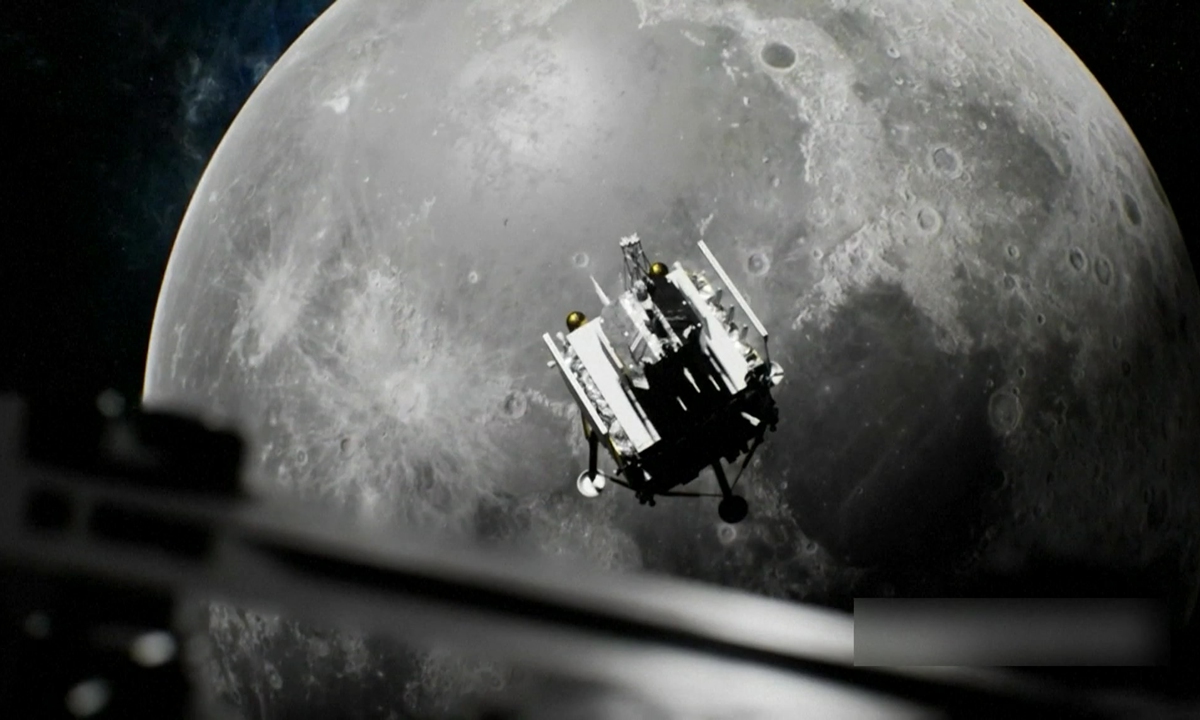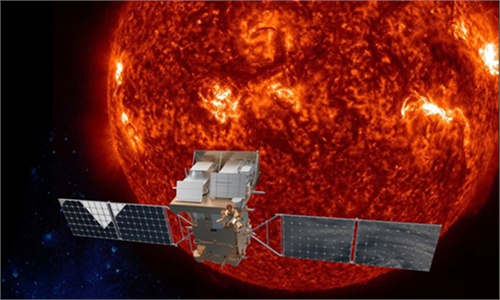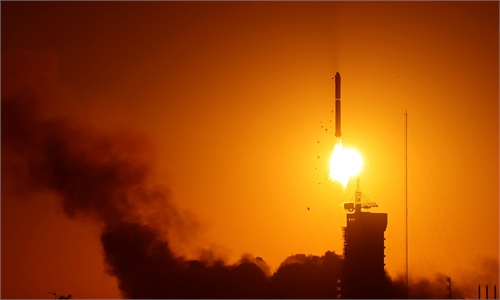
Illustration photo of Phase-4 plans Photo: VCG
China will press ahead with the fourth phase of its lunar exploration program in all respects this year, and it is expected to complete the basic structure for the International Lunar Research Station (ILRS) on the moon's south pole via the Chang'e-7 and -8 probe missions during this decade, said Wu Weiren, the chief designer of China's lunar exploration program.
Wu told state broadcaster China Central Television (CCTV) on Monday that the Phase-4 missions shall consist of Chang'e-6, -7 and -8.
The Chang'e-6 mission will attempt to collect some 2,000 grams of lunar samples from the far side of moon and return them to Earth. The Chang'e-7 mission is intended to land on the moon's south pole and conduct detailed surveys to explore for traces of water, according to the program's chief designer.
The Chang'e-8 mission, which is expected to be launched around 2028, together with the Chang'e-7 mission will complete the building of the ILRS basic structure, and there would be a lunar orbiter, lander and rover as well as a range of scientific detection devices, Wu said.
Sources familiar with the development of the lunar exploration program told the Global Times on Monday that the Chang'e 6 probe is a backup to its predecessor, Chang'e 5, which managed to return 1,731 grams of lunar samples and marked the first lunar-return mission since 1976, so it is capable of collecting and bringing samples back to Earth.
Wang Qiong, a deputy chief designer of the Chang'e-6 mission, disclosed that the Chang'e-6 will be launched in 2024 or 2025.
To prepare for the mission, the Queqiao-2 relay satellite will be launched by the beginning of 2024.
Sources also explained that the selection of the south pole as Chang'e 7's destination was based on two major considerations. One is that it may provide a sustained solar power supply due to its favorable solar illumination conditions, as opposed to extreme heat and cold during the lunar day and night in other regions, and relatively stable temperatures that will allow for long-term robotic exploration and future manned activities at the ILRS.
Another reason for the selection is water, as the permanently shadowed craters in the polar region could harbor reservoirs of ice and other volatile compounds that will be valuable resources for manned explorations.
China began its lunar program in 2004 and has launched five robotic probes since 2007. The fourth, Chang'e 4, landed on the far side of the moon in January 2019, becoming the first spacecraft to closely observe the little-known lunar region. Its rover, named Yutu 2, has been working there for more than four years as the longest-operating lunar rover.
The basic structure of the ILRS will be built by around 2028, so it will be possible for Chinese astronauts to land on the moon within 10 years, according to Wu Weiren in November 2022.
Developers are concluding the research stage for the country's next-generation manned launch vehicle with new technological breakthroughs, and the launcher is moving to the prototype development stage, according to the China Aerospace Science and Technology Corp (CASC).
The next-generation manned rocket is designed and developed in accordance with Chinese manned space authorities' overall plan, and it is commissioned to launch China's next-generation manned spacecraft or the moon surface lander, with an emphasis on high reliability and high safety, the state-owned space giant revealed.
"It is expected to reach maiden flight conditions by 2027," the CASC said.



